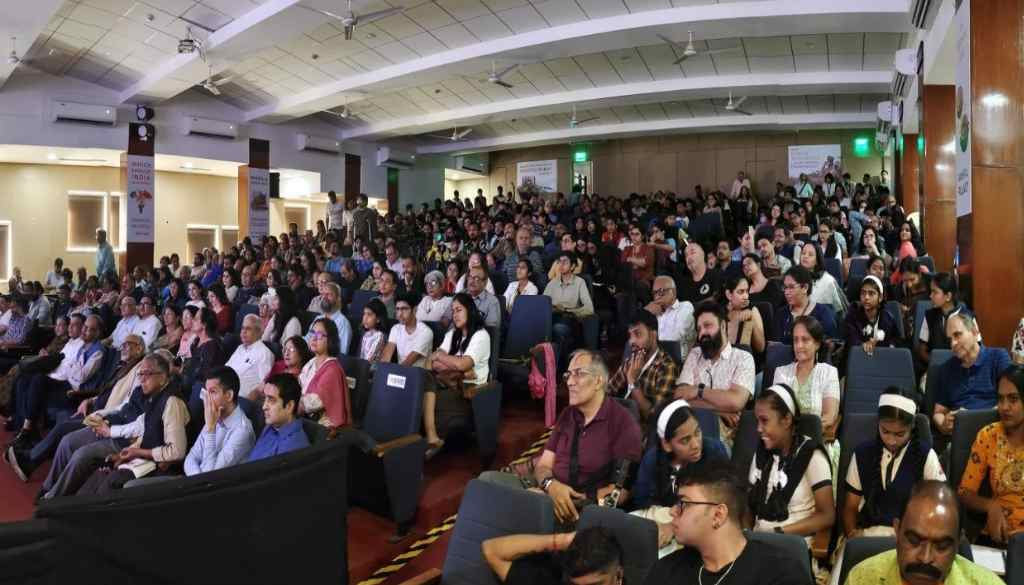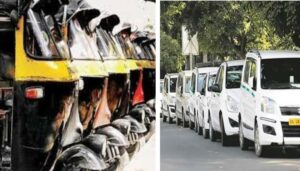Tracks of Time: Indian Railways and Pune’s History Explored in Engaging Sessions at Literature Festival

Pune, 10th February 2024: At the on-going History Literature Festival being held at the Gokhale Institute of Politics and Economics (GIPE), the first half of the second day saw sessions regarding the history of Indian Railways and Pune city.
In the first session, experts put forward their opinions about the history of both, Railways and Indian Railways, and Railways in the pre-Independence era. The second session saw at a glance the rich history that Pune has acquired, Pune’s crucial role in the pre-Independence period and Pune during the Chhatrapati Shivaji Maharaj and Peshwa eras.
Session 01
The first session of the second day of the History Literature Festival commenced with unfolding the history of the Indian Railways. This session featured Arup Chatterjee, author in conversation with G. Raghuram, ex-railway officer. Raghuram has also authored a book based on heritage buildings of the British era belonging to Indian Railways, along with helping in acquiring the status of a ‘World Heritage Site’ to Mumbai’s Chhatrapati Shivaji Terminus. Chatterjee presented the history of railways in the pre-Independence era, ties of Indians with the Railways and the role of Railways in India’s development and freedom struggle.
Raghuram informed about the buildings being constructed during the times when Railways were being built. He also shed light upon the varied architecture of those buildings, and the influence of European and Indian style of architecture seen on them over a certain period of time. He also highlighted that a mixture of European, Indian and Indo-European architecture’s influence can be witnessed on the buildings of the Indian Railways. While speaking about the Railways during the pre-Independence era, Chatterjee informed the audience about the diversity in the system of Indian Railways, efforts of various kings of those times to bring Railways to India and the role of Railways in the Indian Freedom Movement.
Session 02
Pune’s History, Not Centuries But Millions of Years Old!
“The history of Pune is not just decades, but thousands and millions of years old,” asserted Manjiri Khandekar, a history scholar and writer. She was speaking at the History Literature Festival being held at the Gokhale Institute of Politics and Economics. Khandekar along with Uday Kulkarni, a history expert and writer were in a conversation with Amit Paranjape, a tech entrepreneur on the topic ‘History of Pune,’ which delved deep into the tapestry of Pune’s rich culture and history.
Many people may not know, but the discovery of Badminton and establishment of the first ever women’s university happened in Pune. Also, the foundations of India’s first Indology institute and first research institute in economics, namely the Gokhale Institute were laid in Pune itself. The speakers opined that many such pages in the history of Pune, that hold such proud titles, have still remained unfolded.
At the beginning of the session, Manjiri Khandekar said, “We cannot look at history, just the way history happened. We also need to study the branches of geography, geology, literature as well as sociology along with it.” Giving the example of the same, she further said, “Evidences of Indonesian volcanic ashes, nearly 9,000 years old, have been found near a place called Kukadi in Pune. Fossils of Hippos have been found under it, while fossils of Ostriches have also been found in later times. These two pieces of evidence are the proof of the fact that this area was once a wetland, while also being barren for some years.”
Khandekar also presented references starting from the Satavahana era to the18th Century period. At the same time, she also provided evidence of the status of women of those respective times.
While giving the example of Pataleshwar Caves on the Jangli Maharaj (JM) Road, Uday Kulkarni said, “Despite being next to the office of the Archaeology Department, there is no information regarding Pataleshwar available on the board.” While speaking about how Pune got its name, Kulkarni threw light upon its alteration in the 14th century from the name ‘Purna Drishi’ to ‘Pune.’ Simultaneously, he also mentioned Chhatrapati Shivaji Maharaj’s foresight in building a navy with the help of Portuguese technology in the 17th century.
While emphasizing the 18th century, he said that the 17th century laid the foundations of the 18th (Peshwa Era) century. Just as Peshwa Bajirao was an excellent military strategist, his role in letting Pune gain importance as a city was equally crucial. Amit Paranjape further added that many things developed in Pune during Nanasaheb Peshwa’s era, including the huge ‘wadas,’ ‘peths,’ along with markets, water supply systems, etc. Mentioning the same, he highlighted that the water pipes built during those times can still be found amid the constructions.
Towards the end of the session, Uday Kulkarni along with providing proofs, narrated how the letters written by Nanasaheb Peshwa took charge in changing the importance of politics in Pune.
The question-answer round at the end saw a great response from the audience. Much more new information about Pune was elaborated through it.
Session 03
Collaboration between academic and research institutions was the main focus of the third session on the second day. Giving an example from 1956, Pradeep Apte said, “Pune University got its recognition but did not have an appropriate space. At that time, the Bhandarkar Oriental Research Institute gave a building of their premises in the form of an office for the Pune University, and that’s when its actual work started.”
Apte also gave an example of the work done on the occasion of the first Marathi encyclopedia on a collaborative basis by many scholars from different institutions in the city.
While citing the collaboration at a national level, he further said, “Prof. Mahalobnis started the Department of Statistics at the University of Calcutta and later on, his student V M Dandekar became the Director of the Gokhale Institute.”





